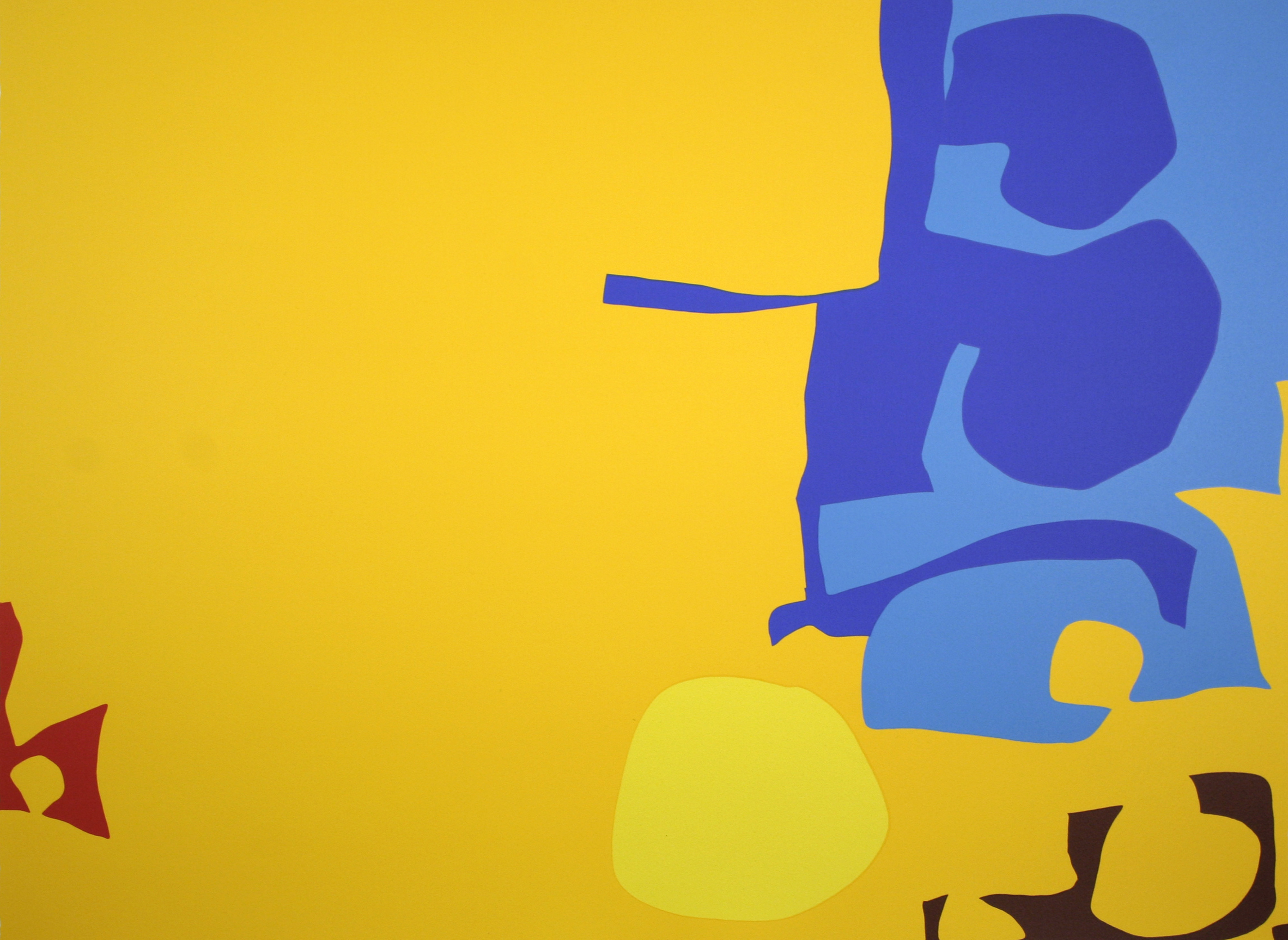June 4, 2011 — The University of Virginia Art Museum exhibition, "New Images, New Techniques: Abstraction in British Screenprints circa 1970," which opens June 17 and runs through Aug. 14, focuses on an important moment in the history of prints in the 20th century: The rise of the screenprint as a major creative medium.
From its origins at the beginning of the 20th century and through the 1950s, screenprinting was practiced mainly by professionals producing textiles, posters and advertising. "The medium was generally thought incompatible with definitions of the artist's print, which assumed that the creator should draw the master image by hand and forego the use of photomechanical means," said Matthew Affron, curator of modern art and organizer of the exhibition. "During the 1960s and into the following decade, artists recognized in screenprinting new possibilities for both their imagery and their craft."
Drawing on the museum's permanent collection, "New Images, New Techniques" samples different aspects of abstract art in Britain, circa 1970. Terry Frost, Patrick Heron and William Scott represented the St Ives School, which for several decades was a hotbed of abstract and constructivist art. Robyn Denny and William Turnbull worked in minimalist idioms. Justin Knowles investigated the visual power of precise and brightly colored shapes. Liliane Lijn translated the dynamic forms of her kinetic sculptures into prints.
Whether expressive or hard-edged in their styles, whether they referred to natural forms or compositions built up from simple geometrical elements, these artists found inspiration by thinking in terms of the attributes of the screenprint process: sleekness of surface, precision in the delineation of shapes, the use of successive screens to create serial mutation in the image and the power of strong areas of saturated color to generate dynamic spatial effects, Affron said.
Admission to the U.Va. Art Museum is free. Public hours are noon to 5 p.m., Tuesdays through Sundays. For information, visit here.
The exhibition is made possible through the support of Arts$, The Hook, Albemarle Magazine and Charlottesville Welcome Book, Ivy Publications LLC.
From its origins at the beginning of the 20th century and through the 1950s, screenprinting was practiced mainly by professionals producing textiles, posters and advertising. "The medium was generally thought incompatible with definitions of the artist's print, which assumed that the creator should draw the master image by hand and forego the use of photomechanical means," said Matthew Affron, curator of modern art and organizer of the exhibition. "During the 1960s and into the following decade, artists recognized in screenprinting new possibilities for both their imagery and their craft."
Drawing on the museum's permanent collection, "New Images, New Techniques" samples different aspects of abstract art in Britain, circa 1970. Terry Frost, Patrick Heron and William Scott represented the St Ives School, which for several decades was a hotbed of abstract and constructivist art. Robyn Denny and William Turnbull worked in minimalist idioms. Justin Knowles investigated the visual power of precise and brightly colored shapes. Liliane Lijn translated the dynamic forms of her kinetic sculptures into prints.
Whether expressive or hard-edged in their styles, whether they referred to natural forms or compositions built up from simple geometrical elements, these artists found inspiration by thinking in terms of the attributes of the screenprint process: sleekness of surface, precision in the delineation of shapes, the use of successive screens to create serial mutation in the image and the power of strong areas of saturated color to generate dynamic spatial effects, Affron said.
Admission to the U.Va. Art Museum is free. Public hours are noon to 5 p.m., Tuesdays through Sundays. For information, visit here.
The exhibition is made possible through the support of Arts$, The Hook, Albemarle Magazine and Charlottesville Welcome Book, Ivy Publications LLC.
— By Jane Ford
Media Contact
Article Information
June 2, 2011
/content/uva-art-museum-features-new-images-new-techniques-abstraction-british-screenprints-circa

